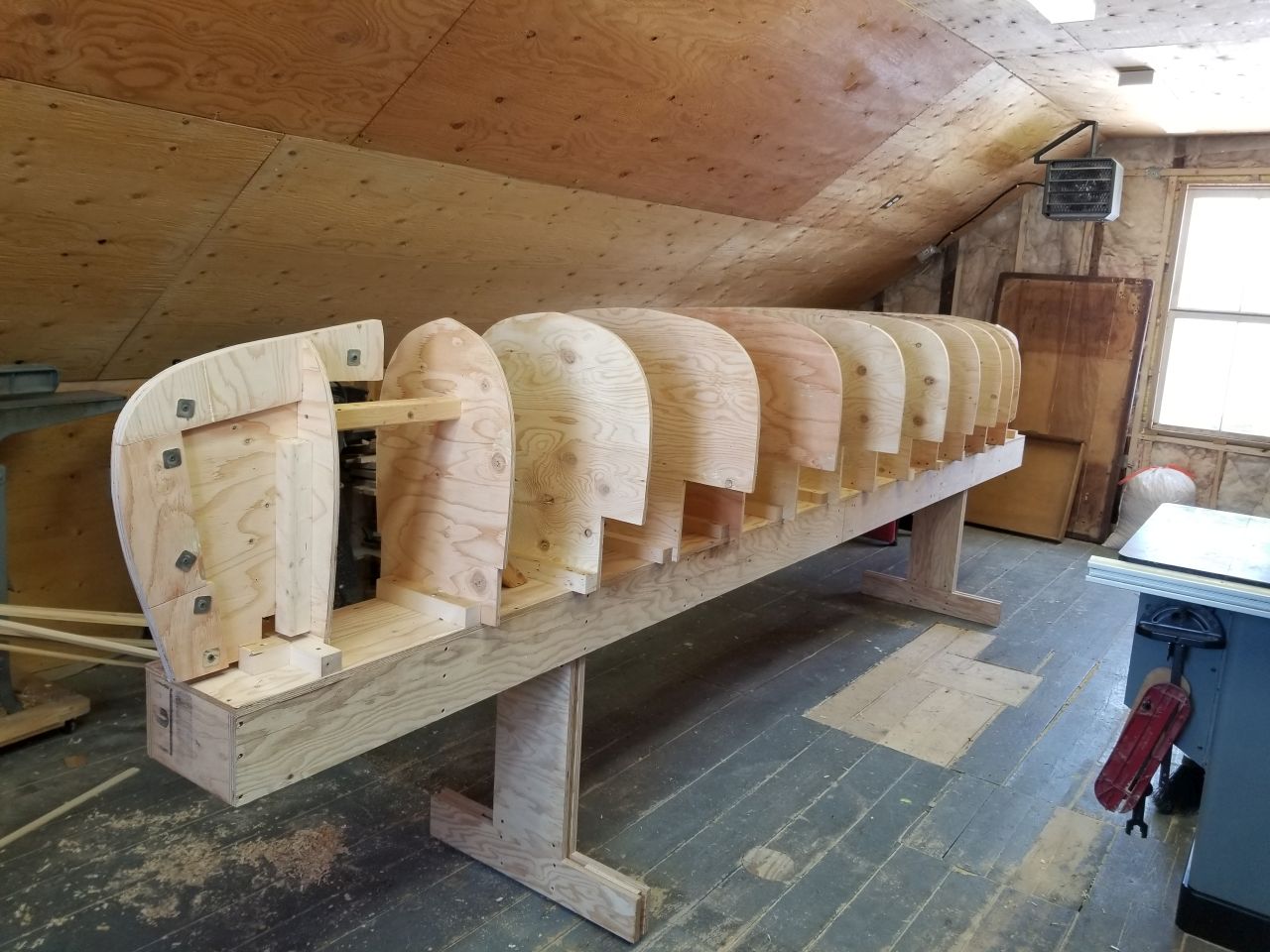As titled, this is my first build - a stemless, 15' Bob Special from Noah's Marine (a Windsor Boat Works design, I believe). The target weight is 50lbs and I will be taking it easy on myself as far as esthetics go (luckily - you'll see) - zero consideration given to the sorting/matching of strips. This is happening on the 2nd storey of my garage shop - canoe will be leaving through the rear window (which was measured approximately 73 times throughout the build).
The strips are eastern white cedar sourced from a local hobby mill. I bought 22 lengths of 5/4 x 4" x ~9'. I planed them down to 3/4". I pained over strip thickness, wanting to save weight without giving up too much strength. I decided to mill the strips at 0.210" which gave me between 13 and 14 strips per board (thanks to Freud). I stopped after milling 11 boards, and so ended up with enough wood for another boat. I did not bead and cove the strips - I opted to use a rolling bevel and purchased the Robo-Bevel jig from Guillemot Kayaks as well as Lee Valley's micro plane.
The strongback was made from some industrial plywood that was being liquidated. A weird size - just shy of 11/16" - probably 17mm. Though at $10 a sheet, I loaded as much as I could.
Forms were made from 1/2" plywood and looking back, I should have gone thicker and probably for a different material, but the mdf is terrible here - delaminating and such. I used green painters tape to cover the edges of the forms. This proved to be a rather large mistake - more later.
March 1st, 2020 - Ready to start stripping the hull. Note that the insulation washers on the stem forms are there simply to provide some extra thickness so that my 1" screws don't poke through the other side.

